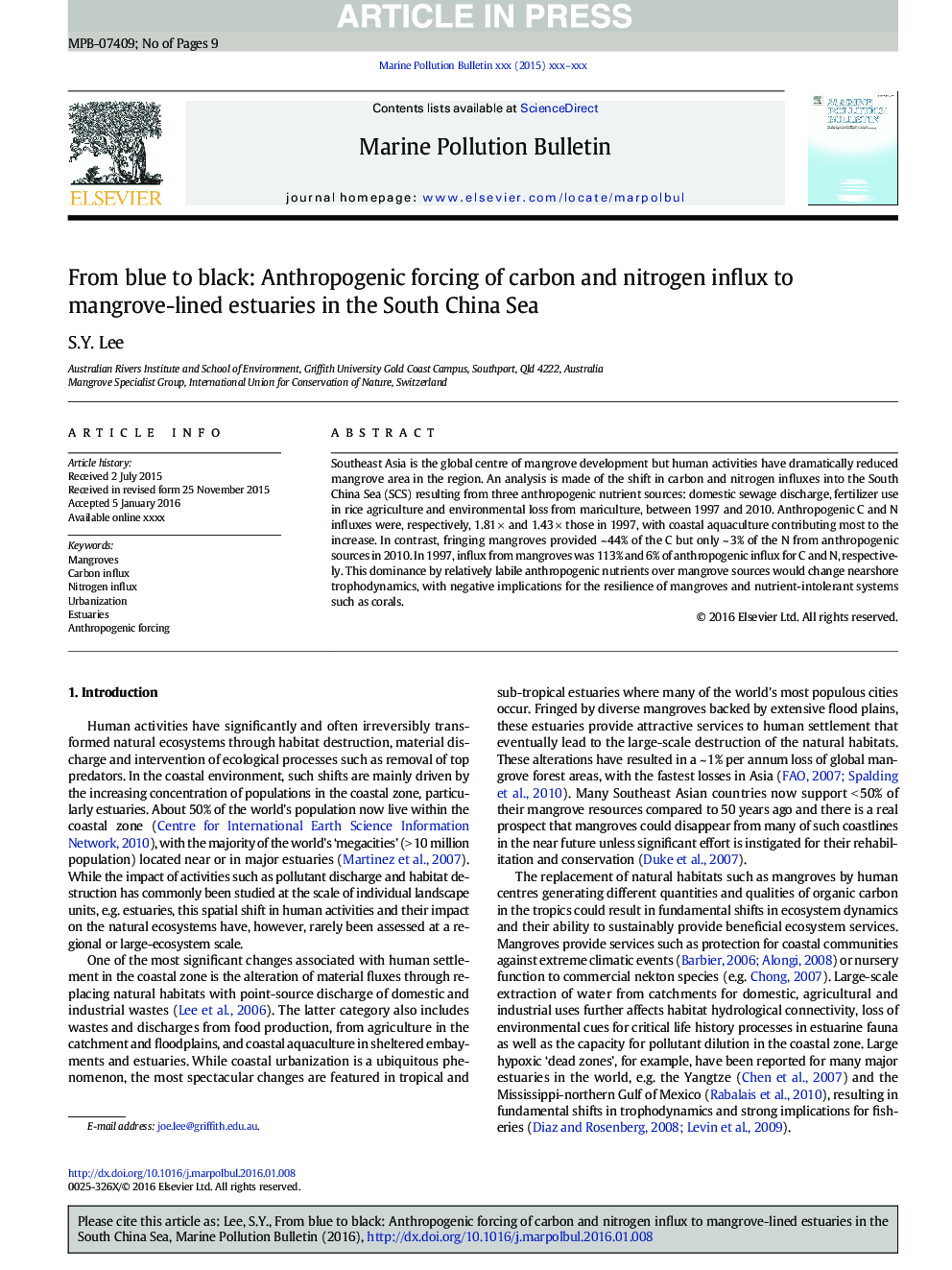| Article ID | Journal | Published Year | Pages | File Type |
|---|---|---|---|---|
| 6355607 | Marine Pollution Bulletin | 2016 | 9 Pages |
Abstract
Southeast Asia is the global centre of mangrove development but human activities have dramatically reduced mangrove area in the region. An analysis is made of the shift in carbon and nitrogen influxes into the South China Sea (SCS) resulting from three anthropogenic nutrient sources: domestic sewage discharge, fertilizer use in rice agriculture and environmental loss from mariculture, between 1997 and 2010. Anthropogenic C and N influxes were, respectively, 1.81Â Ã and 1.43Â Ã those in 1997, with coastal aquaculture contributing most to the increase. In contrast, fringing mangroves provided ~Â 44% of the C but only ~Â 3% of the N from anthropogenic sources in 2010. In 1997, influx from mangroves was 113% and 6% of anthropogenic influx for C and N, respectively. This dominance by relatively labile anthropogenic nutrients over mangrove sources would change nearshore trophodynamics, with negative implications for the resilience of mangroves and nutrient-intolerant systems such as corals.
Related Topics
Physical Sciences and Engineering
Earth and Planetary Sciences
Oceanography
Authors
S.Y. Lee,
